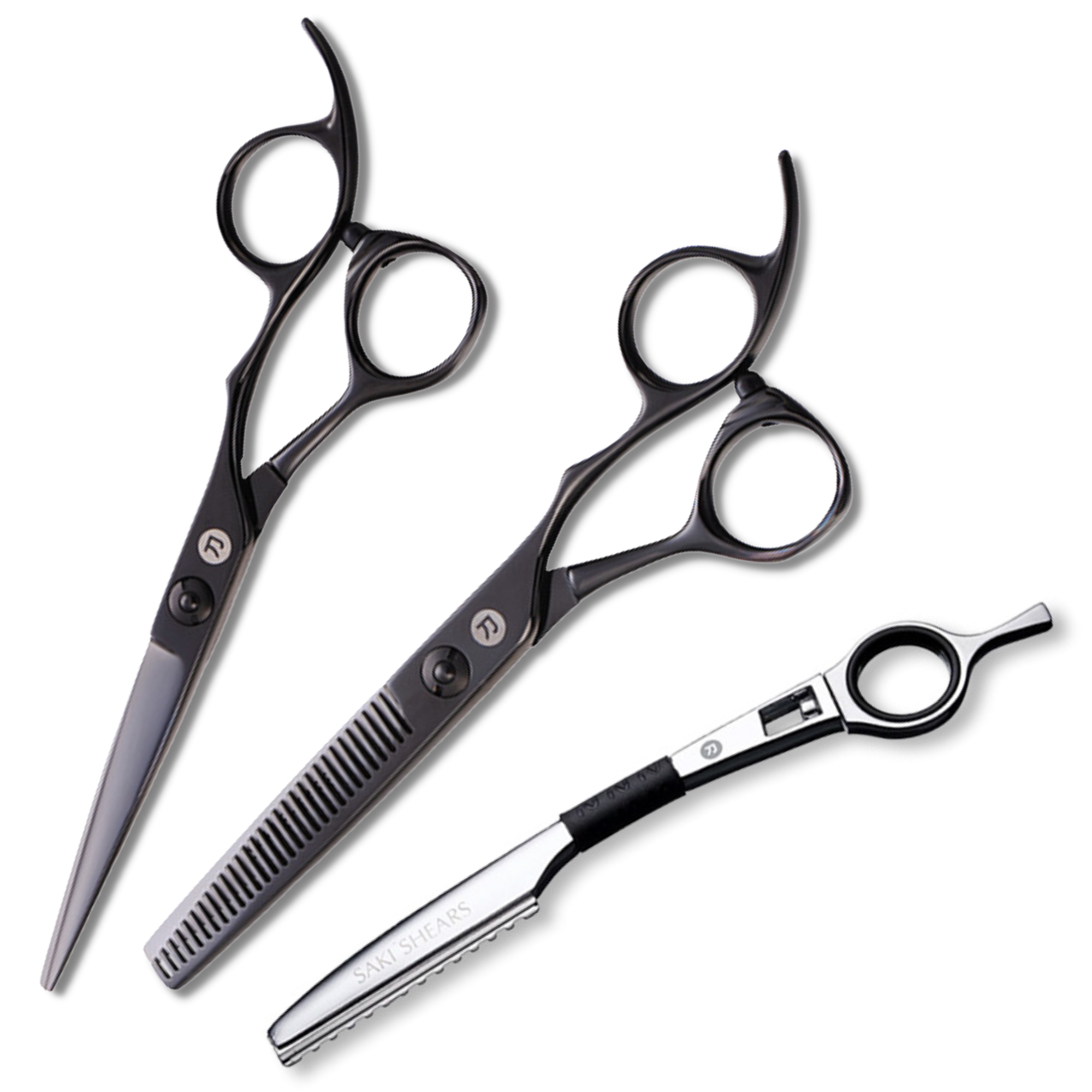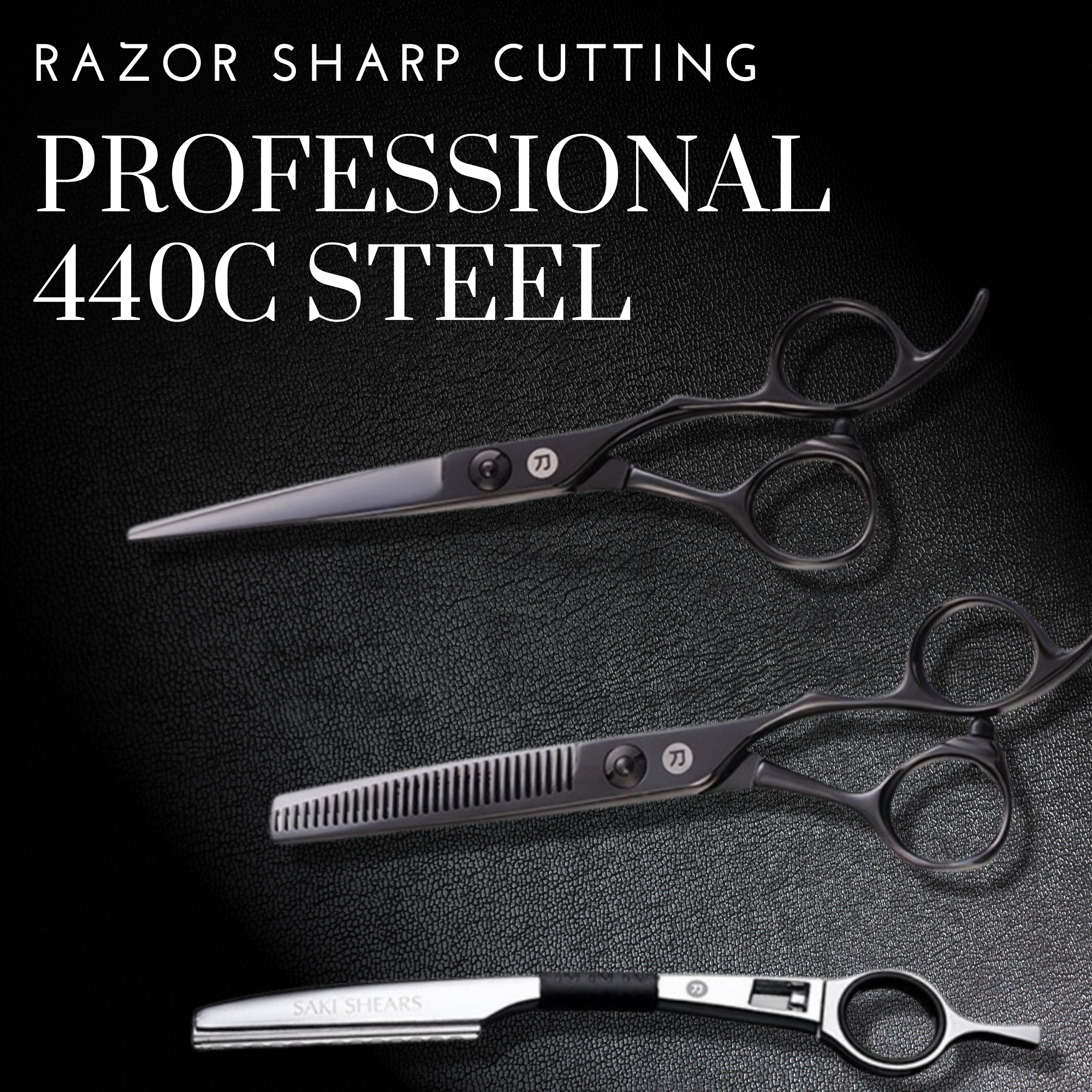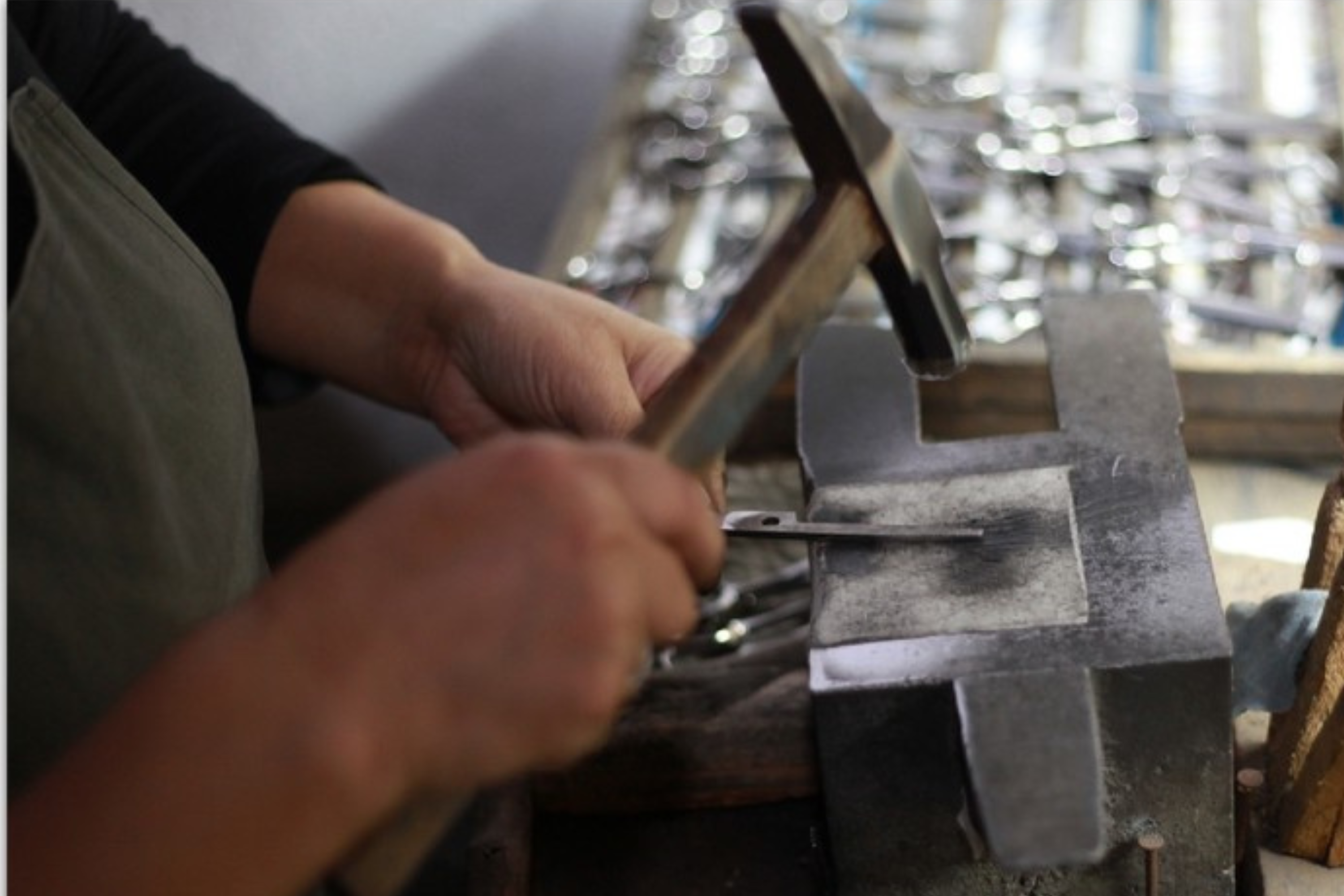440C Steel - The Professional Choice for Premium Hair Shears
Japanese 440C steel is more than just a blend of minerals; it's a testament to a culture deeply rooted in craftsmanship, quality, and innovation. Known for its exceptional hardness, corrosion resistance, and edge retention, this steel has found its way into a myriad of applications—from surgical instruments to ball bearings. However, one of its most fascinating uses is in the world of professional hair shears. The journey of 440C steel from ore to shear is a captivating tale that marries ancient tradition with modern science. In this article, we will delve into the history, manufacturing, and unique properties of Japanese 440C steel, exploring why it has become the material of choice for high-quality hair shears.
The History of Japanese Steel
Japan's history with steel-making dates back to ancient times, long before the advent of 440C steel. The country is renowned for its Tamahagane steel, which was traditionally used in crafting Samurai swords. These swords were not just weapons but works of art, embodying the Samurai's spirit, skill, and honor. The meticulous craftsmanship that went into each sword has been passed down through generations, evolving over time to meet the demands of modern applications.
The transition from Tamahagane to modern steel types like 440C was not abrupt but a gradual process influenced by technological advancements and changing needs. Today, 440C steel stands as a symbol of Japanese ingenuity, offering a blend of characteristics that make it highly versatile. While it may not be used in battlefields, its application in tools like hair shears proves that the Samurai spirit of precision and excellence lives on.
The Mystique of Japanese Craftsmanship
In Japan, craftsmanship is not just a skill; it's a philosophy. The Japanese term "Monozukuri" encapsulates the art of making things, emphasizing not just the end product but the process and spirit involved in its creation. This philosophy is deeply ingrained in Japanese steel-making, where attention to detail is paramount. From selecting the right minerals to the final heat treatment, each step is carried out with a level of care that reflects a centuries-old tradition.
The concept of "Monozukuri" extends to the workers themselves, who are often considered artisans rather than mere laborers. Their expertise is honed through years of training, ensuring that each batch of 440C steel lives up to the high standards set by both history and modern science.
The Geological Aspect: Mining the Minerals
The journey of 440C steel begins deep within the Earth, where the essential minerals like iron, chromium, and carbon are found. Japan, although not particularly abundant in mineral resources, has always been innovative in sourcing and refining the raw materials needed for steel production. The country imports a significant amount of these minerals, ensuring that only the highest quality elements go into the making of 440C steel.
The mining process itself is a blend of traditional techniques and cutting-edge technology. Miners extract the ore, which is then subjected to a series of tests to determine its composition and quality. The ore is then processed to separate the valuable minerals from the waste material. This is a critical step, as the purity of the minerals significantly impacts the quality of the steel.
The Metallurgical Aspect: From Ore to Steel
Once the minerals are extracted and processed, they head to the smelting plants. Here, the raw materials are melted at extremely high temperatures, often exceeding 1,500 degrees Celsius, to form a homogeneous liquid metal. The alloying elements, such as chromium for corrosion resistance and carbon for hardness, are added at this stage. The precise composition of 440C steel includes about 1.1% carbon and 16-18% chromium, among other elements, making it a high-carbon stainless steel.
The molten steel then undergoes a series of treatments, including annealing and quenching, to achieve the desired mechanical properties. Heat treatment is a crucial step in the production of 440C steel, as it significantly influences its hardness, toughness, and corrosion resistance. The Japanese have mastered the art of heat treatment, often employing secret techniques passed down through generations to achieve the perfect balance of properties.
The Manufacturing Process
After the steel has been smelted and treated, it's time to shape it into usable forms. This often involves processes like forging, rolling, and cutting. In Japan, even these seemingly mundane tasks are carried out with a level of expertise that reflects the nation's commitment to quality. Special techniques, often proprietary to individual manufacturers, are employed to ensure that the steel meets the stringent standards required for professional applications like hair shears.
Quality control is another area where Japanese manufacturers excel. Each batch of 440C steel undergoes rigorous testing to ensure it meets the required specifications. From hardness tests to corrosion resistance evaluations, no stone is left unturned in the quest for perfection.
440C Steel in Hair Shears
The journey of 440C steel culminates in its application, and one of the most intriguing uses is in the crafting of professional hair shears. But why is this particular steel so well-suited for this application? The answer lies in its unique blend of properties. Hair shears require a material that is not only hard but also resistant to corrosion, given the constant exposure to moisture and hair products. 440C steel's high carbon content ensures excellent hardness, while its chromium component offers superior corrosion resistance.
When compared to other types of steel, 440C often comes out on top for shear manufacturing. While there are other high-carbon stainless steels, the specific balance of elements in 440C provides an unparalleled combination of hardness, sharpness, and durability. Expert opinions and testimonials from hairstylists and barbers often point to a noticeable difference in performance when using shears made from 440C steel.
The Science Behind the Shear
The science of hair cutting is more complex than it may appear. A shear must be sharp enough to make clean cuts, hard enough to maintain that sharpness, and durable enough to withstand daily use. 440C steel checks all these boxes. Its hardness rating often exceeds 58 HRC (Rockwell Hardness Scale), making it one of the hardest steels suitable for shears. This hardness ensures that the shears remain sharp for extended periods, reducing the frequency of sharpening and prolonging the tool's lifespan.
Ergonomics also play a crucial role in the design of hair shears. The material's weight, balance, and ease of handling can significantly impact a hairstylist's work quality and comfort. 440C steel offers a favorable strength-to-weight ratio, allowing for the creation of shears that are both robust and easy to handle. This is particularly important for professionals who use these tools for extended periods, as it minimizes hand fatigue and strain.
Sustainability and Environmental Concerns
The production of steel, including 440C, is energy-intensive and has environmental implications. However, Japan has been proactive in implementing sustainable practices in its steel industry. From energy-efficient smelting techniques to recycling programs, efforts are being made to reduce the environmental footprint of steel production.
Moreover, the longevity of 440C steel products contributes to sustainability. High-quality shears made from this material can last for years, if not decades, with proper care. This durability reduces the need for frequent replacements, thereby conserving resources and minimizing waste.
The story of Japanese 440C steel is a compelling narrative that spans centuries, from the ancient forges that crafted Samurai swords to the modern factories producing world-class hair shears. It's a tale that embodies the essence of Japanese craftsmanship, where the pursuit of perfection is a lifelong journey. This high-carbon stainless steel, with its unique blend of hardness, corrosion resistance, and edge retention, stands as a testament to Japan's enduring commitment to quality and innovation.
In the realm of professional hair shears, 440C steel has found its niche, offering hairstylists and barbers a tool that not only performs exceptionally but also lasts. The marriage of tradition and technology in this remarkable material ensures that the Samurai spirit of precision and excellence continues to live on in each snip and cut.
And there you have it—an in-depth look at Japanese 440C steel, from its historical roots to its modern applications. This journey from ore to shear encapsulates the meticulous care, expertise, and innovation that define Japanese craftsmanship. Whether you're a professional hairstylist, a steel enthusiast, or simply someone fascinated by the blend of tradition and technology, 440C steel stands as a shining example of what is possible when history and science come together in the pursuit of excellence.
Saki Cisailles Vente








L'ensemble de coupe de cheveux Saki Katana est la paire parfaite! Faits à la main et fabriqués à l'aide d'acier inoxydable japonais et d'un épais revêtement de titane noir, les ciseaux à cheveux Katana Saki et le cisaillement à éclaircir offrent la durabilité ultime pour une paire de ciseaux à cheveux longue durée sur laquelle vous pouvez compter. L'ensemble Saki Katana comprend nos cisailles de coupe de cheveux premium, cisailles à cheveux, rasoir et étui de transport en cuir.
Options:
L'ensemble de 6 "comprend la cisaille Katana 6", la cisaille à éclaircir 6 ", le rasoir pivotant et l'étui en cuir.
L'ensemble de 7 "comprend les cisailles Katana 7", les cisailles à éclaircir 6 ", le rasoir pivotant et un étui en cuir.
Gaki Katana Garantie: Couvert par Saki Shears Garantie à vie
Saki Katana Ciseaux de coupe
Les cisailles à cheveux Saki Katana présentent un bord convexe et une lame en acier inoxydable à triple rodage pour une coupe précise et lisse, tandis que la poignée de grue extra-longue et décalée combat la fatigue et offre le confort ultime. Idéal pour la coupe émoussée, humide et sèche.Caractéristiques:
- Fait à la main pour la précision
- Matériau: Acier inoxydable japonais
- Lame: Lame convexe de style japonais avec la dureté 60-61 HRC
- Taille de bague : Réglable
- Soudé en deux pièces
- Revêtement noir: Revêtement titane
- Épaisseur de revêtement: 1.5 um
- Taille: 6 pouces
Cisailles éclaircies Saki Katana
Saki Katana Thinning Shear est parfait pour éclaircir, mélanger et/ou ajouter de la texture à toute coiffure avec 30 dents et épaisses, courtes lames épée arrière. Offset, poignée de grue extra-longue et taille de bague réglable offre le plus grand confort et soutien tout en style.
Caractéristiques:
- Fait à la main pour la précision
- Matériau: Acier inoxydable japonais
- Lame: Lame convexe de style japonais avec la dureté 60-61 HRC
- Taille de bague : Réglable
- Soudé en deux pièces
- Revêtement noir: Revêtement titane
- Épaisseur de revêtement: 1.5 um
- Taille: 6 pouces/30 dents
Votre Saki Katana Set comprend:
- 1 cisailles à cheveux saki katana faites à la main
- 1 Ciseaux à éclaircissement Saki Katana faits à la main
- 1 rasoir pivotant fait main
- 1 cas
- Garantie à vie
Saki Cisailles Katana ligne de ciseaux à cheveux sont p Pour les maîtres barbiers, les coiffeurs avancés et les coiffeurs professionnels.





